
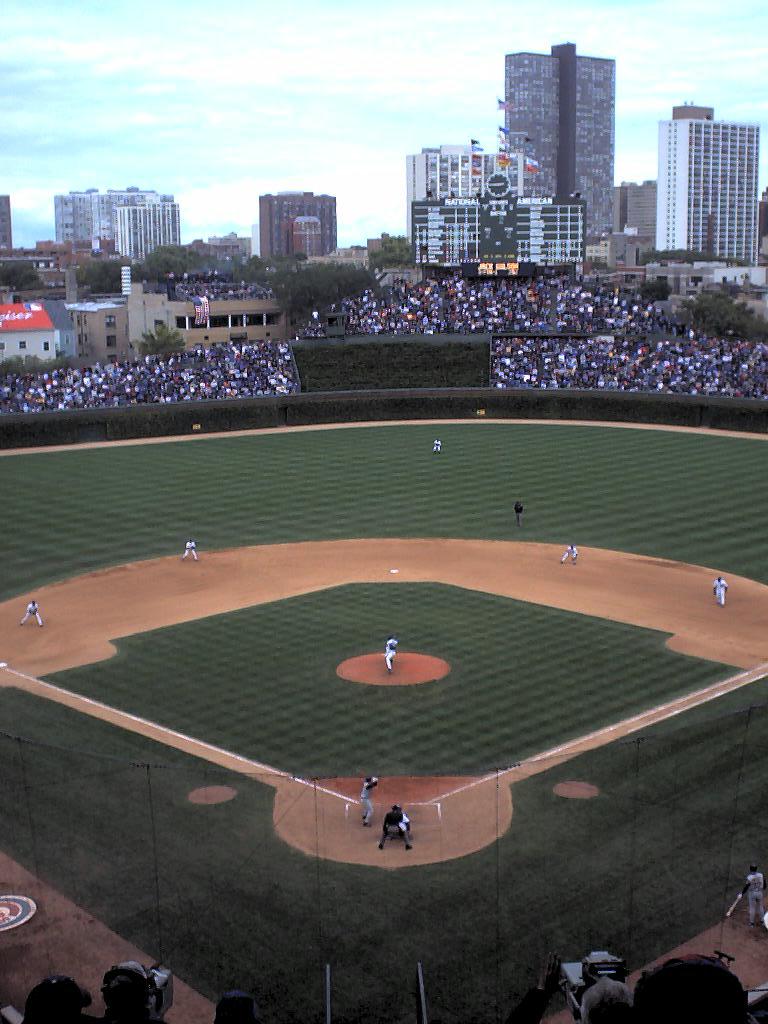 - - 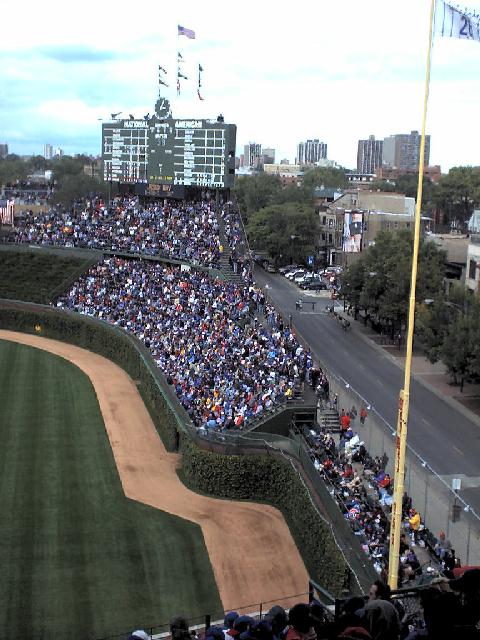
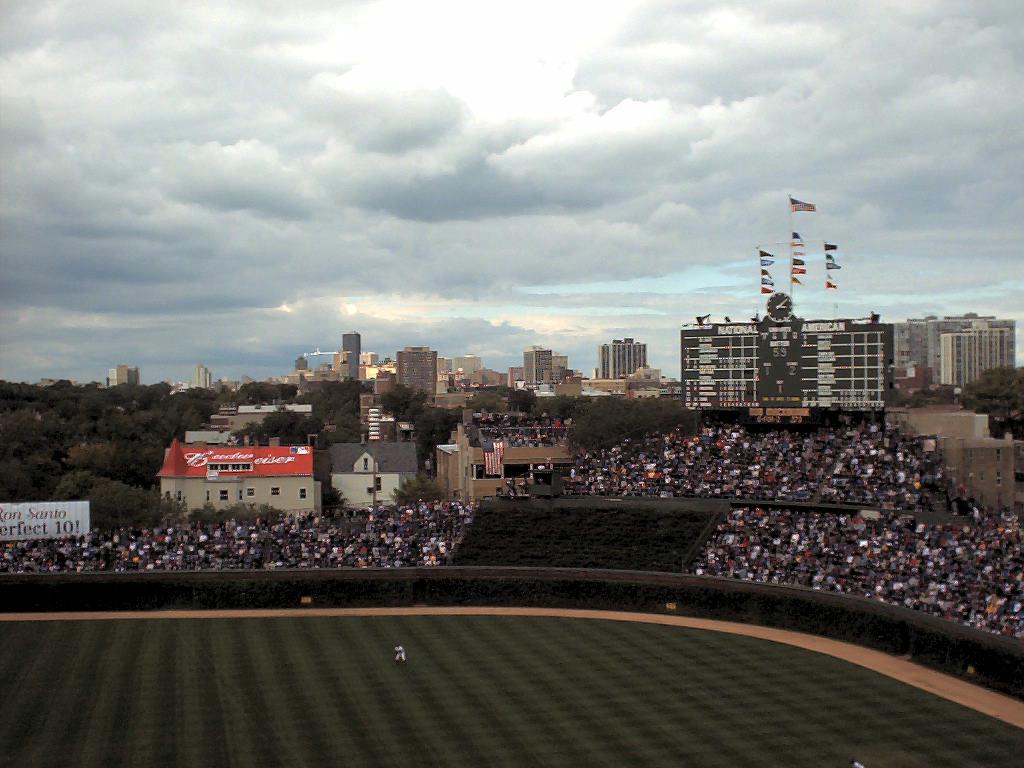 - - - -
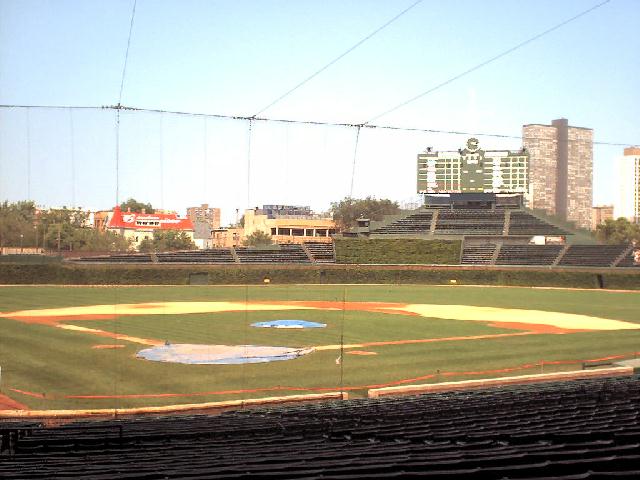 - -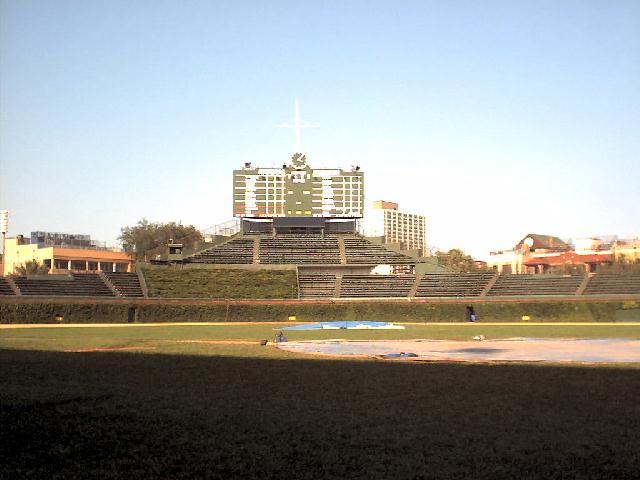 - -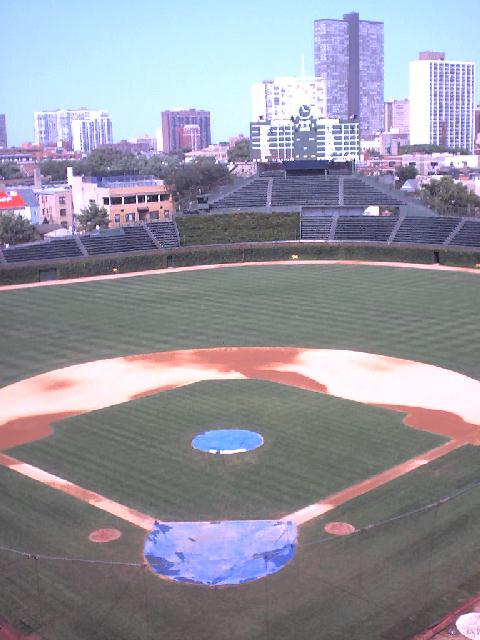
 - -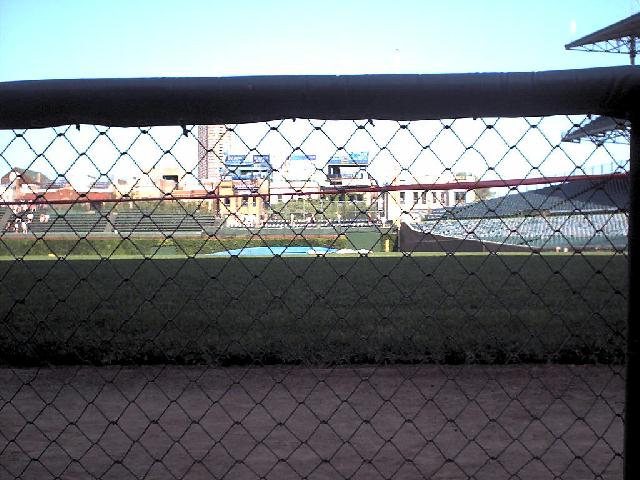
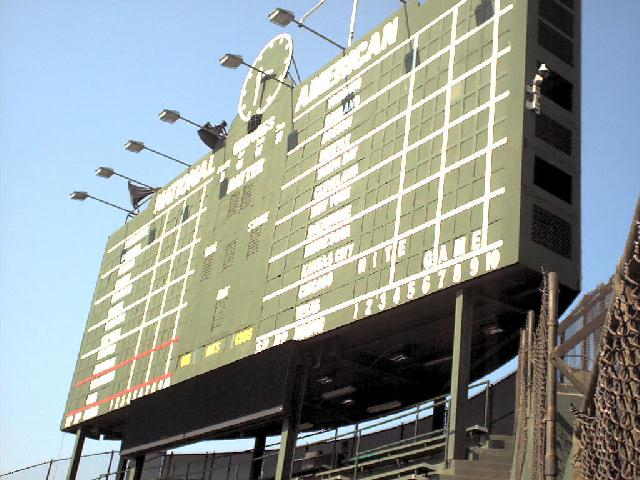 - -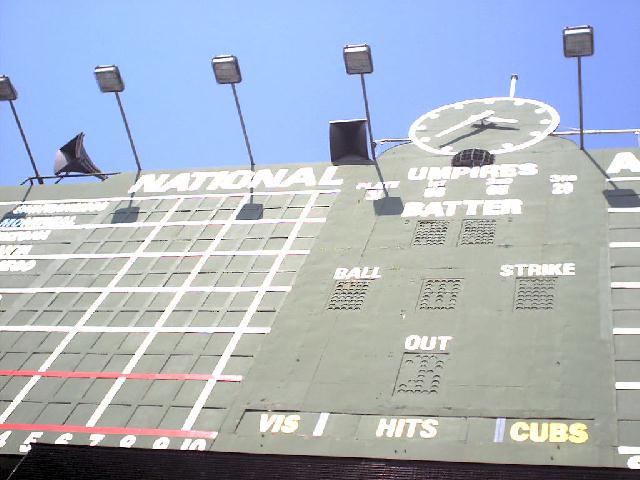
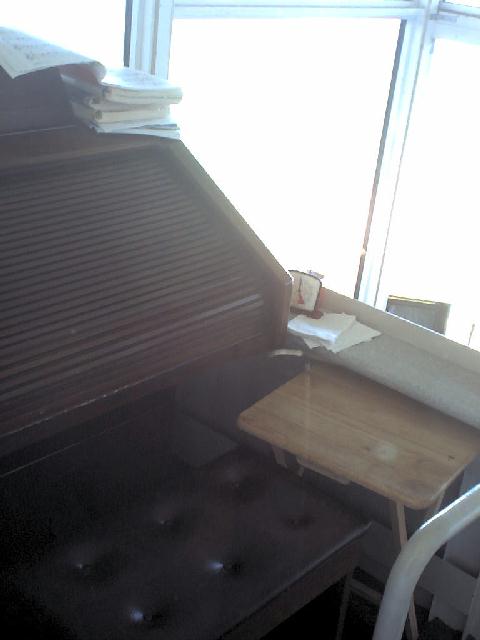 - -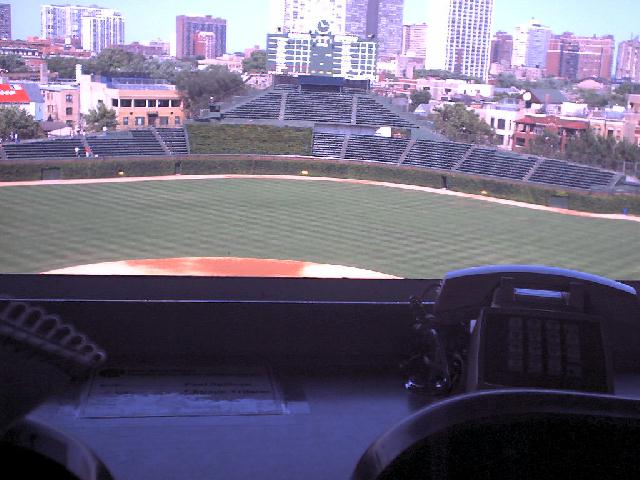 - -
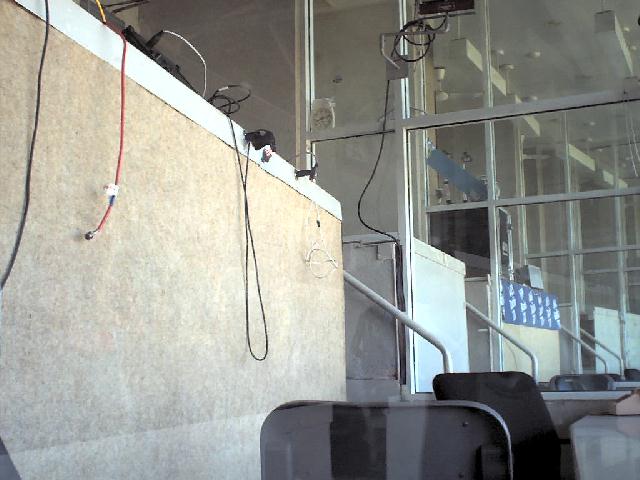 - -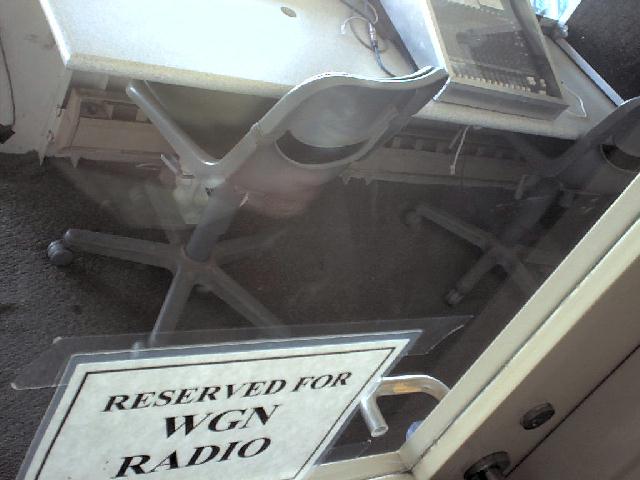 - -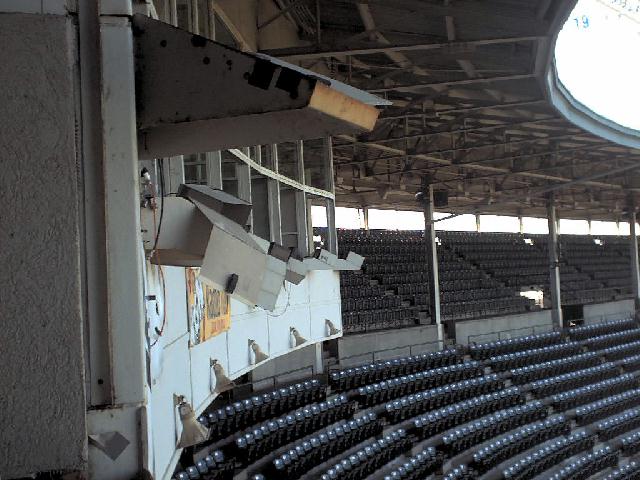
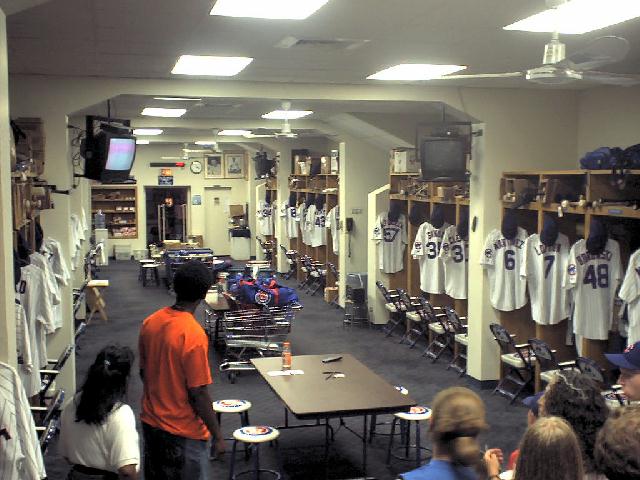 - -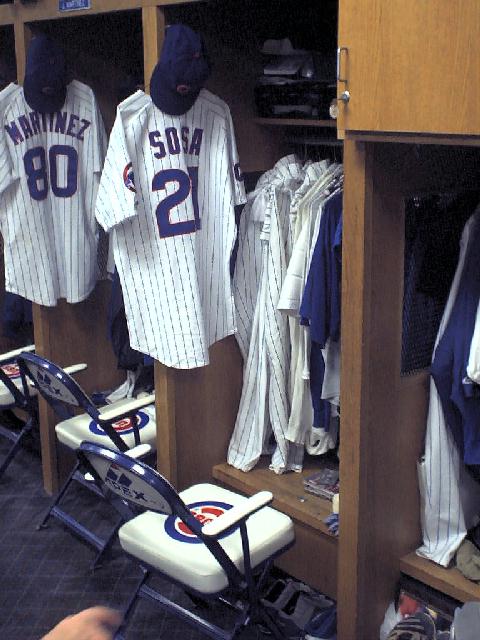
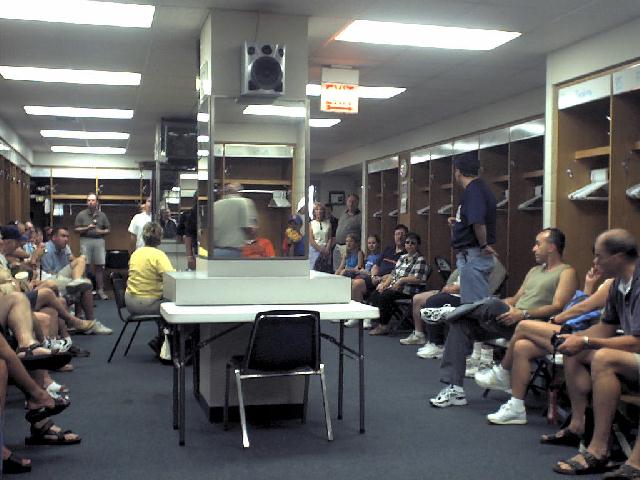 - -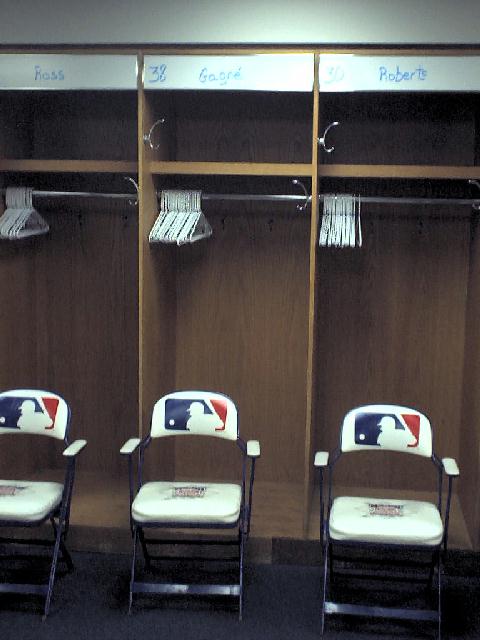 - -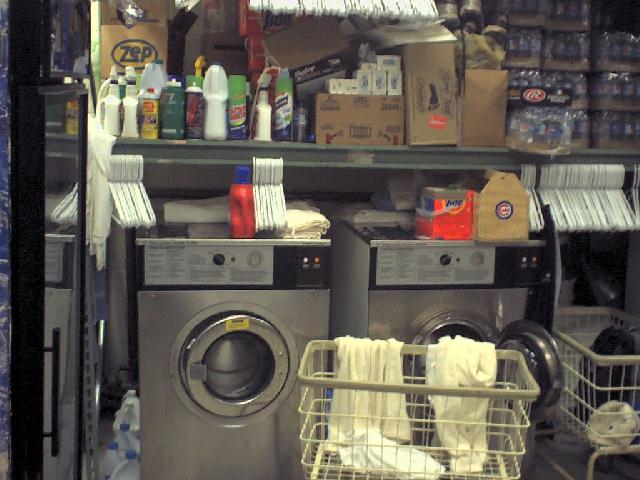 - -

Game shots from 9/28/03 game against
the Pirates.
Shots of empty stadium and clubhouses
from August
'03 tour of the stadium.
2003 NB |
|
Wrigley
Field was built on the site of a seminary, and the corner of Clark and
Addison has been a sacred place ever since. One of the most famous places
of any kind in any city, the stadium is a reminder of how great baseball
used to be.
Since it was
founded with the motto urbs in horto, or "city in a garden," the
city of Chicago was a physical paradox, with the filth and noise of its
factories alongside the verdant serenity of its parks. Wrigley Field's
pastoral purity is part of what makes it timeless; the sight of the smooth
green lawn stretching toward the ivy tumbling down the outfield wall provides
a refreshing escape from the din and dirt of city life. There is no odious
JumboTron to ruin the view, as there is in every other major league park.
For a long time, in fact--until the emergence of slugger Sammy Sosa and
the Cubs' premier young pitching staff--the stadium itself was the main
reason to go to a Cubs game.
The odd thing
about Wrigley's prominence as a living monument to baseball is that it
has a far more illustrious history as a football stadium. Few fans
remember that Wrigley Field hosted the Chicago Bears from their move to
Chicago in the 1920's to their move to the lakefront in the early 70's.
In fact, no other football stadium has hosted more NFL games than Wrigley
Field (New Jersey's Meadowlands, which hosts both the Giants and the Jets,
will finally break that mark in a year or two). And the players that took
the gridiron here include the most storied in Bears history--Dick Butkus,
Gale Sayers, Mike Ditka, and coach (and Cubs fan) George Halas. But where
Yankee Stadium and Fenway Park are standing-room-only for the ghosts of
their Hall-of-Famers, as a baseball stadium, Wrigley just doesn't have
as many heroes and great moments (one would-be legend, Babe Ruth's called
shot, was a myth; he didn't really point to center field before hitting
a home run). In fact, when the Cubs lost to the Red Sox in the 1918 World
Series, they played at Comiskey Park, not Wrigley Field, which was too
small at the time. That's not to say there were some big baseball firsts
here; Wrigley was the first ballpark to let fans keep foul balls, the first
to have an organist, and the first to build a permanent concession stand.
There are other
reasons to tame one's romanticism about this picturesque ballpark, including
the yuppie fans who populate it. The glut of Eddie Bauer-clad, Big Ten
alum Lincoln Park loft-dwellers with a cell phone in one hand and a beer
in the other is not what baseball is all about (although, to their credit,
Cubs fans are into the game; they form one of only four or five big-league
crowds to roar for strike two against the visitors and ball three for the
home team). Spare us talk of how this Lexus-driving crowd is "long-suffering."
Since the early
1980s, there's been another ugly dent in the Cubs' cuddliness, and that's
the Tribune Company. The same behemoth that owns the Chicago Tribune and
WGN TV and radio, and recently gobbled up a chain of newspapers from Los
Angeles to Orlando to New York, is now the custodian of this baseball treasure.
Already the Tribune Company plunked lights on Wrigley's roof (which I'm
OK with; some night games can be nice, and few realize that Cubs' owners
had pondered putting lights up in the 40's) and plans to put seats over
the south sidewalk of Waveland. The day is coming--perhaps not for 20 or
50 years, but coming nonetheless--when the powers that be decide that the
stadium is just too creaky and cramped and build a place of comfort and
profit (hopefully it will not be greeted as eagerly by the Tribune newspaper
as when, during the lights controversy of 1988, an editorial called for
"a Wrigley Field replica in the suburbs" and "hole in the ground left at
Clark and Addison").
The most important
part of Wrigley's mystique is its physical participation in its neighborhood
and city. Most pro sports stadiums are self-contained and stranded in vast
parking lots (or, in a recent twist, built as retro replicas in reviving
industrial areas). Wrigley embraces its surrounding blocks--Clark, Addison,
Sheffield, Waveland, and beyond--and enlivens its unique North Side neighborhood
(Wrigleyville, as realtors and beer ads call the area). Wrigley has streets,
apartments, bars, El trains, and atmosphere around it. This is what
sports used to mean to cities, before fans' and teams' suburban migration,
and it's why the stadium is irreplaceable as a sports treasure.
Until that
suburban replica is erected, I relish the fact that, for all the nostalgia
that sustains baseball, for all of the wistful reflections I've heard from
fans of the old Brooklyn Dodgers or Yankee greats like Mickey Mantle, I'll
someday be able to tell my son or daughter how I used to take the Red Line
to watch Hall of Famer Sammy Sosa and the Cubs at Wrigley Field.
"Wow, Dad,"
they'll say. "Was that before they were renamed the Chicago Tribs?" -NB
The ballpark
we love is many things. It is a museum and a hot dog joint. It is a day
at the beach and a night in the rain. It is a national monument and a neighborhood
hangout. It is a circus and a cathedral. It is a delightful contradiction.
On the one hand, it is a time capsule, infused with history. On the other
hand, it maintains an everyday familiarity and a willingness to change
at a moment's notice. Wrigley Field is both a celebrity and a good friend.
It is priceless jewelry that you can wear. ... [It] has refused to age gracefully.
It has refused to age, period.
-Mark Jacob,
Wrigley Field: A Celebration of the Friendly Confines
-History
of Wrigley Field from Cubs.com
-Review
of Wrigley Field from ESPN.com's Jim Caple
-Review
of Wrigley Field from ChicagoBarProject.com
Coming soon:
Timeline of Wrigley history |